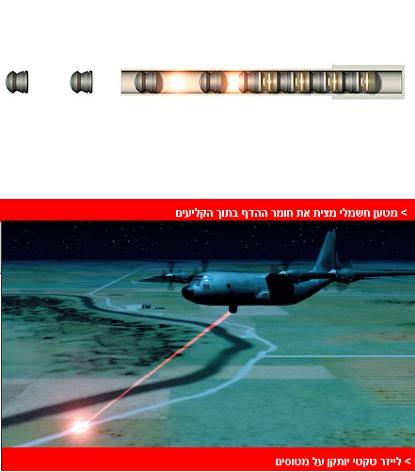The Pentagon is exploring increasingly strange technologies for next-generation combat systems. Yesterday we presented you with the first fictional vision on the list: an electromagnetic railgun. Today we will present two more systems from the Pentagon's science fiction future.

A rifle that fires a million volleys per minute
Shooting a rifle is always a very mechanical process: a bullet exits the front of the barrel and a spring ejects the empty cartridge from the side of the rifle. For hundreds of years, gun manufacturers have only managed to improve the firing process, and the guns themselves can still jam or accidentally eject bullets due to wear and tear on the moving parts.
Australian company Metal Storm offers a solution: remove all moving parts from modern guns and replace them with electronic ballistic technology and computerized controls. Bullets stacked in a barrel will fire at a rate of 60,000 per minute, and even a million per minute in certain multibarrel configurations. Encoded electrical signals will ignite the explosive inside each projectile. The pressure created by the small explosion will push the projectile out, and at the same time cause the expansion of the projectile behind it which will block the barrel, preventing further emissions until the order to fire.
Since no soldier has the ability to load new cartridges every 3 milliseconds - systems installed on vehicles will do this. It is also possible to adapt the system to different needs, such as mounting large nests on an armored vehicle or helicopter. Furthermore, Metal Storm will be able to fire non-lethal volleys such as rubber bullets, for example, for crowd dispersal. The main disadvantage of the system at the moment: consumption of electrical power.
The Metal Storm system has already been tested with projectiles ranging in diameter from 9 mm to 60 mm in several weapons. The US military helps fund this system. If the Pentagon decides to adopt the weapon, it will likely enter service within 5 to 10 years.
A laser cannon that explodes from the air
Directed energy weapons experts at the US Air Force Research Laboratories are close to a solution that will overcome the two main obstacles that have confined laser weapons to science fiction for the past 50 years. Experiments have shown that the laser has enough power to function as a weapon, and that the chemical emission, dangerous to the weapon operators and people on the ground, can remain contained within a sealed system. If all goes according to plan, within 10 years the "advanced tactical laser" may introduce a new type of weapon to the battlefield.
The first incarnation of the weapon will be a megawatt oxygen-iodine chemical laser launched from the rotating turret of a C-130 gunship. The width of the beam may reach 10 cm and its effective range 32 km. The beam will be able to burn its way into vehicles and machines with millisecond precision and timing. The next step will be hardware development for aiming, tracking and firing. Among the questions that the researchers must answer: How long should the fund stay on the target for the desired result to be obtained? Laser weapons are relatively cheap compared to the existing long-range weapons. The intensity of the laser can be adjusted, a fact that adds to its flexibility: in urban areas, the intensity of the beam can be weakened so that it damages machines but does not kill people.
It is likely that the tactical lasers of the next generation will operate with the help of electricity and diodes, since a chemical laser requires the storage and transportation of heavy components. The biggest challenge regarding electric lasers is the management of the heat produced - the heat control will require active cooling so that the diodes do not overheat. The solid lasers will be smaller than the chemical ones so they can be used to shoot at planes or vehicles. The ultimate goal is to create a system that has a variety of effects on the battlefield.
